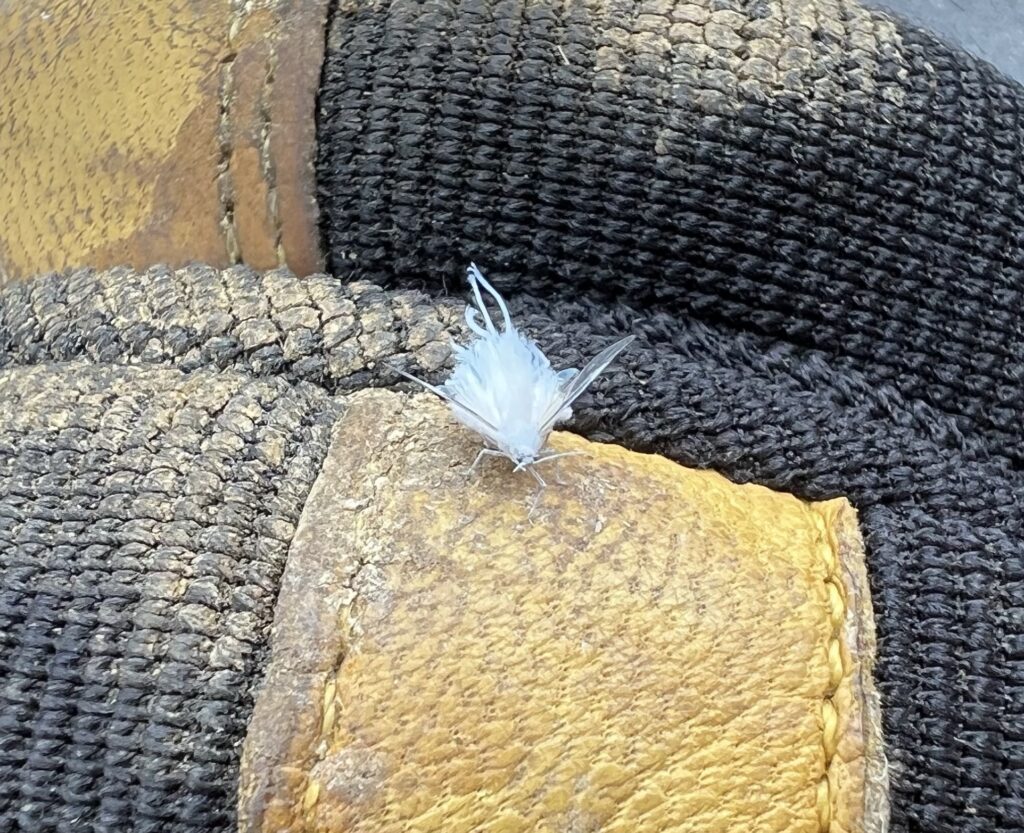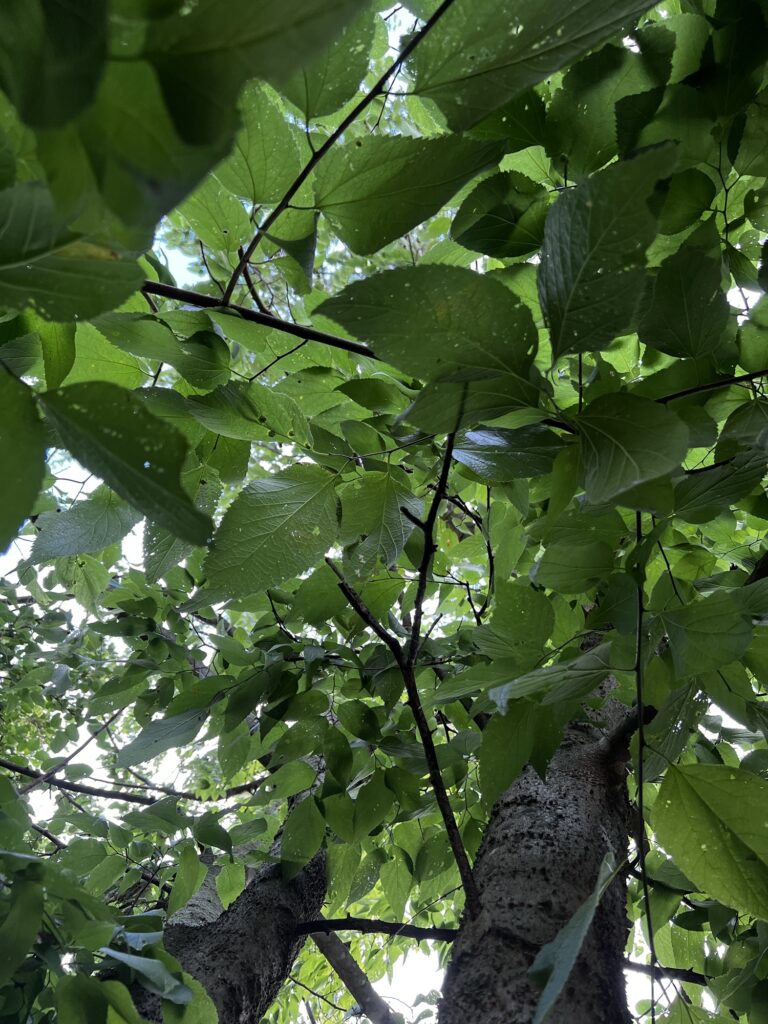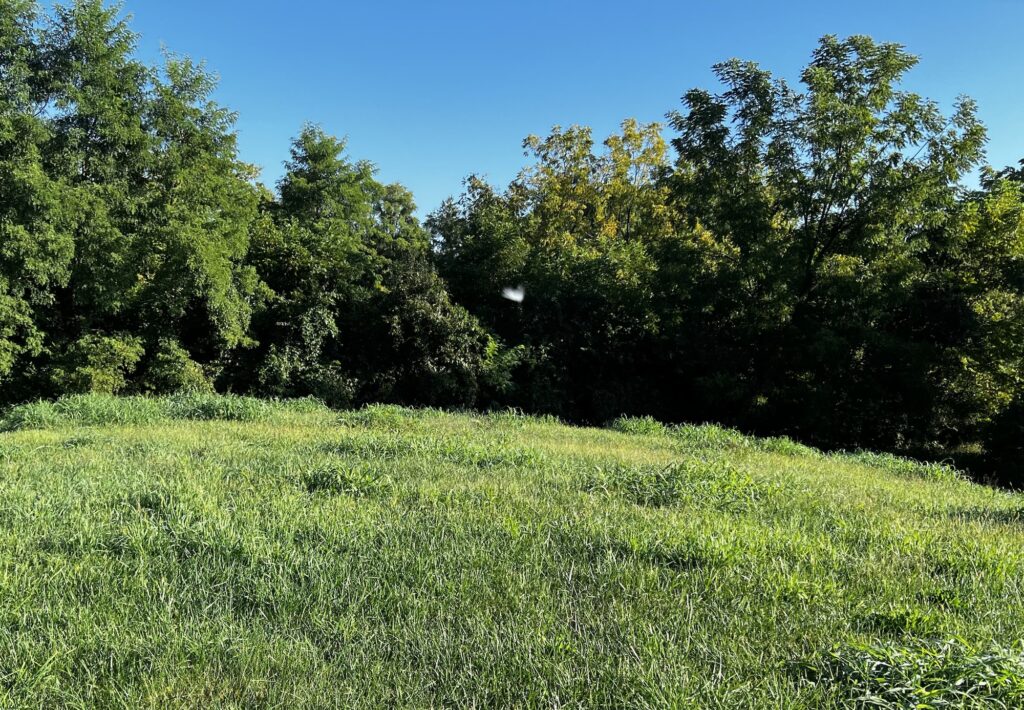
The natural world is full of wonders. If you’re like me, you can’t help but notice – and revel – in these amazing moments that demand your full attention. One hot summer morning, as I was loading up my Gorilla Cart with 5-gallon buckets of fermented feed to begin the animal chores outside (there are “inside” animal chores, too, of course), something caught my eye. It looked like a floating bit of cottony matter. I watched it for a bit, soon realizing that it wasn’t merely drifting on the breeze – it was flying. It invited a closer look.
Gently, I managed to get the flying bit of fluff to land on my (very manky, if I say so, myself) glove. If the work gloves aren’t dirty, you’re not working! Close up, it was clear that it was some kind of flying insect.

After letting me take a few photos, the tiny creature continued on its way. Online research identified the insect as a Woolly Aphid. An aphid! Up to that day, I had only seen aphids that were green or black, and neither sported a full, fuzzy coat. What kind of strange aphid was this?
Apparently, a Woolly Aphid creates the “wool” from waxy bodily secretions. Cool, huh? I thought so, too. Unfortunately, as with its less fuzzy brethren, it sucks the sap from plants. We have several hackberry trees, as well as maples, and Woolly Aphids can feed on both. I suspect that the one in the photos is a Woolly Alder Aphid (Prociphilus tessellatus) because they’re known to feed on silver maples during one part of the year, and silver maples are plentiful on the farm.

Ok, so maybe this this whimsical creature is a plant pest…but it’s an enchanting pest. With monikers like “fairy aphid” and “fairy fly”, I’m clearly not the only person to appreciate its fantastical loveliness. And it does look like a fairy, garbed in fluffy white (and slightly avant garde) finery…with a pair of iridescent wings! If that doesn’t describe a fairy “to a T”, I don’t know what does.
I have to wonder, too: how did these insects evolve to mimic something that is plentiful around here – downy white feathers? Our geese are frequently sending their feathers into the air (often, as they flap their wings and strays set sail on the breeze), and those errant feathers look almost exactly like a Woolly Aphid, merrily drifting along. See for yourself!

Nature never fails to amaze, to surprise, and to remind me of how her mysteries unfold in their own time and place (as she chooses). May you see something today that reminds you that there are many awe-inspiring creatures on this planet, and that beauty surrounds us. Look for it.
